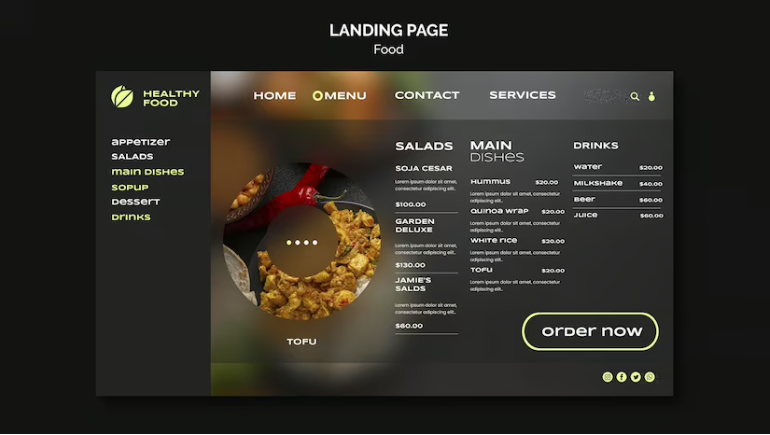Are you curious about the latest restaurant technology trends that are taking the industry by storm? As a restaurant owner or manager, it’s important to stay on top of the latest developments in the tech world to keep up with the competition.
From artificial intelligence to data analytics, there are plenty of exciting innovations that are transforming the way restaurants operate and provide service to customers.
In this article, you’ll learn about some of the most cutting-edge restaurant technology trends to watch out for.
Whether you’re looking to improve your supply chain, enhance the dining experience, or increase customer retention, these trends can help you stay ahead of the game.
So, sit back, relax, and get ready to discover the latest and greatest in restaurant technology.

Artificial Intelligence in the Restaurant Industry
You may not realize it, but AI is already making a big impact in your favorite restaurants. From personalized recommendations to efficient kitchen operations, artificial intelligence is changing the way restaurants operate.
AI-powered menu recommendations are becoming more popular in restaurants. They help customers find dishes that match their dietary preferences and taste. The technology uses machine learning algorithms that analyze customers’ past orders, food reviews, and preferences to suggest the most suitable dishes. By doing so, restaurants can improve customer satisfaction and increase sales.
Another way AI is changing the restaurant industry is through chatbot customer service. Chatbots are computer programs that can simulate human-like conversations with customers via text or voice messages. They can help customers make reservations, order food, and answer frequently asked questions. Chatbots are available 24/7 and can handle multiple customers simultaneously, which results in faster response times and reduced labor costs for restaurants.
As AI-powered chatbots become more sophisticated, they can even learn from customer interactions and improve their responses over time.
Blockchain for a More Transparent Supply Chain
Implementing blockchain in the food industry can bring greater visibility and accountability to the supply chain, ultimately leading to a more sustainable and ethical food system. By using blockchain traceability, every step of the production and distribution process can be tracked, providing transparency and assurance to customers about the authenticity and quality of their food.
This technology can also help to ensure ethical sourcing practices, as the origins of ingredients can be traced back to their farms or suppliers. Furthermore, blockchain can also reduce food waste and improve efficiency in the supply chain. With real-time tracking of inventory and delivery, restaurants can better manage their stock and reduce the amount of food that goes to waste.
This not only benefits the environment but also saves money for businesses. Overall, implementing blockchain technology in the food industry can have a positive impact on both the ethical and economic aspects of the supply chain.
Contactless Ordering and Payment Systems
If you’re looking for a faster and more convenient way to order and pay for your meals, contactless ordering and payment systems are becoming increasingly popular. With the COVID-19 pandemic still affecting the world, more and more restaurants are implementing contactless menus and mobile ordering systems to minimize physical contact and reduce the risk of transmission.
Contactless menus allow customers to access the menu using their own mobile devices by scanning a QR code or accessing a website link. This eliminates the need for physical menus and reduces the risk of contamination.
Mobile ordering, on the other hand, allows customers to place their orders and pay using their phones, without the need for a server to take their order. This speeds up the ordering process, reduces wait times, and minimizes physical contact.
As contactless ordering and payment systems become more prevalent, it’s important for restaurants to adapt to these changes to provide a safer and more convenient dining experience for their customers.
Virtual and Augmented Reality for Enhanced Dining Experiences
By incorporating virtual and augmented reality, diners can immerse themselves in a unique and interactive dining experience.
Interactive menus can be projected onto tables or walls, allowing diners to explore the ingredients and preparation methods of each dish. Customers can even see a 3D model of what their order will look like before it arrives at the table. This not only enhances the dining experience but also helps customers make informed decisions about their choices.
Immersive ambiance can also be created through virtual and augmented reality. Restaurants can transport customers to different locations or settings, such as a beach or a forest, to enhance the dining experience.
This technology can also be used to educate customers about the history and culture behind certain dishes. By creating a unique and unforgettable dining experience, restaurants can attract new customers and build a loyal following.
Data Analytics and Personalization for Customer Retention
Maximizing customer loyalty is crucial for any business, and using data analytics to personalize the dining experience can make customers feel valued and appreciated.
With the help of customer insights gathered through data analytics, restaurants can create personalized experiences that cater to individual preferences and habits. This can range from customized menu suggestions based on past orders to personalized marketing promotions and loyalty programs.
In fact, loyalty programs are a key component of personalization in the restaurant industry. By tracking customer behavior and rewarding them for their loyalty, restaurants can foster stronger relationships with their customers and increase the likelihood of repeat business.
Data analytics can also help restaurants identify potential areas for improvement and address customer complaints, further enhancing the dining experience and fostering customer loyalty. By leveraging data analytics and personalization tools, restaurants can stay ahead of the competition and provide a dining experience that keeps customers coming back for more.
Frequently Asked Questions
How does the use of artificial intelligence in the restaurant industry affect employment opportunities for humans?
AI’s impact on employment opportunities in the restaurant industry is a mixed bag. While automation may reduce the need for some tasks, it can also create new job opportunities and improve overall efficiency. Pros and cons exist.
Can blockchain technology be used to prevent food fraud or contamination in the supply chain?
You can use blockchain solutions and traceability technology to prevent food fraud and contamination in the supply chain. These technologies ensure transparency and accountability, allowing for quick identification and response to any issues.
Are contactless ordering and payment systems more secure than traditional methods?
Are you concerned about payment safety? Contactless security offers a more secure method of payment than traditional methods, protecting your personal information from potential theft or fraud.
How can virtual and augmented reality be used to improve accessibility for customers with disabilities?
You can improve inclusive dining by utilizing virtual accessibility through technologies like virtual and augmented reality. These tools can provide assistance for customers with disabilities by enhancing menus, providing visual aids, and enabling remote ordering.
What ethical considerations should be taken into account when using customer data analytics for personalization and retention strategies?
When using customer data analytics for personalization and retention strategies, you must prioritize data privacy and transparency. Be upfront about what data you’re collecting and how you’re using it, and give customers control over their information.
Conclusion
So there you have it, the latest trends in restaurant technology that you should keep an eye on. With the help of artificial intelligence, blockchain, contactless systems, and virtual and augmented reality, restaurants can streamline their operations, improve customer experiences, and increase profitability.
By leveraging data analytics and personalization, restaurants can also gain valuable insights into their customers’ preferences and behavior, which can help them retain loyal customers and attract new ones.
As technology continues to evolve, it’s important for restaurants to stay on top of these trends and incorporate them into their operations. By doing so, they can enhance their competitiveness and stay ahead of the curve in an increasingly digital world.
So whether you’re a restaurant owner, manager, or customer, be sure to keep an eye out for these exciting developments in the industry.



